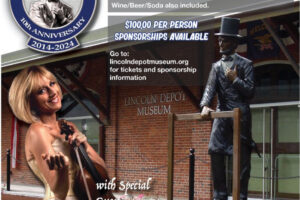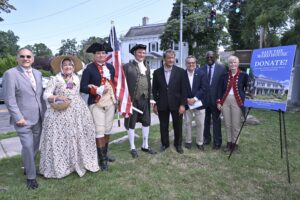
My name is, followed by your name, is a sentence that every person learns in childhood and eventually most people learn to take great pride in their name and what it means. Just like people, every country, state, county, city, town, village and road has a name. Yet most of us say the name of our town without ever giving much thought to what it means. As common as this tendency for a person to utter their town’s name without thinking about it is, this is also rather strange when you think about it, because the history behind the name of a town is what connects our generation to the previous one and to the next. Those who live in Hartsdale are often proud to live there for many valid reasons, yet how many actually know why Hartsdale is called Hartsdale? This article will explore this question.
Hartsdale got its name during the Revolutionary Era (1775-1783) when Philipsburg Manor, the estate owned by Vredyck Filipsen/Fredrick Philipse, the wealthy Dutch merchant who came to the area in 1653 but changed his name and allegiance when the British Army invaded the territory in 1664, was broken up by patriot forces and dispersed. The confiscation of Philipsburg Manor occurred in 1778.
Even before the confiscation occurred however, most of the land was being rented by one of six wealthy families: the Appleby’s, the Odell’s, The Oakley’s, the Hart’s, the Hunt’s and the Barnes’. At the outbreak of the American Revolution, the Appleby’s, the Odell’s, and the Oakley’s were patriots whereas the Hart’s, the Hunt’s and the Barnes’ were loyalists. Hartsdale is named for the patriarch of the Hart family, John Hart. This of course raises the question of, “Why would one of Greenburgh’s villages be named for a British loyalist?”
The answer to this question is that at some point during the war, the Hart family defected and joined the patriot cause). Today John Hart’s estate is the Hart’s Brook Nature Reserve, but it is important to mention that from 1932-1957, it belonged to Gillette co-founder Henry Gaisman and his wife Catherine Vance Gaisman. This fact is significant because after purchasing the estate in 1932, Gaisman added an additional 30 acres to it.
Henry Gaisman purchased 135 acres in 1932 and passed the title to the Archdiocese of New York with the understanding that he and his wife, Catherine, would reside there as long as they lived. Currently the Town of Greenburgh does a great job of managing the park. The lush green trees at Hart’s Brook Reserve give a quaint feel as you walk by the trails. Somehow they give the message: “relax and stroll, there’s no need to hurry.”
Perhaps this answer is a little less than emotionally satisfying given the unwavering loyalty of the Odell’s, Appleby’s and Oakley’s but it is worth noting that history is the story of imperfect people and is therefore rarely 100% emotionally satisfying. While residents of Hartsdale may not be proud of John Hart’s entire life, they can at least be proud that he eventually saw the light. If nothing else, John Hart’s story is proof that anyone can earn redemption.







